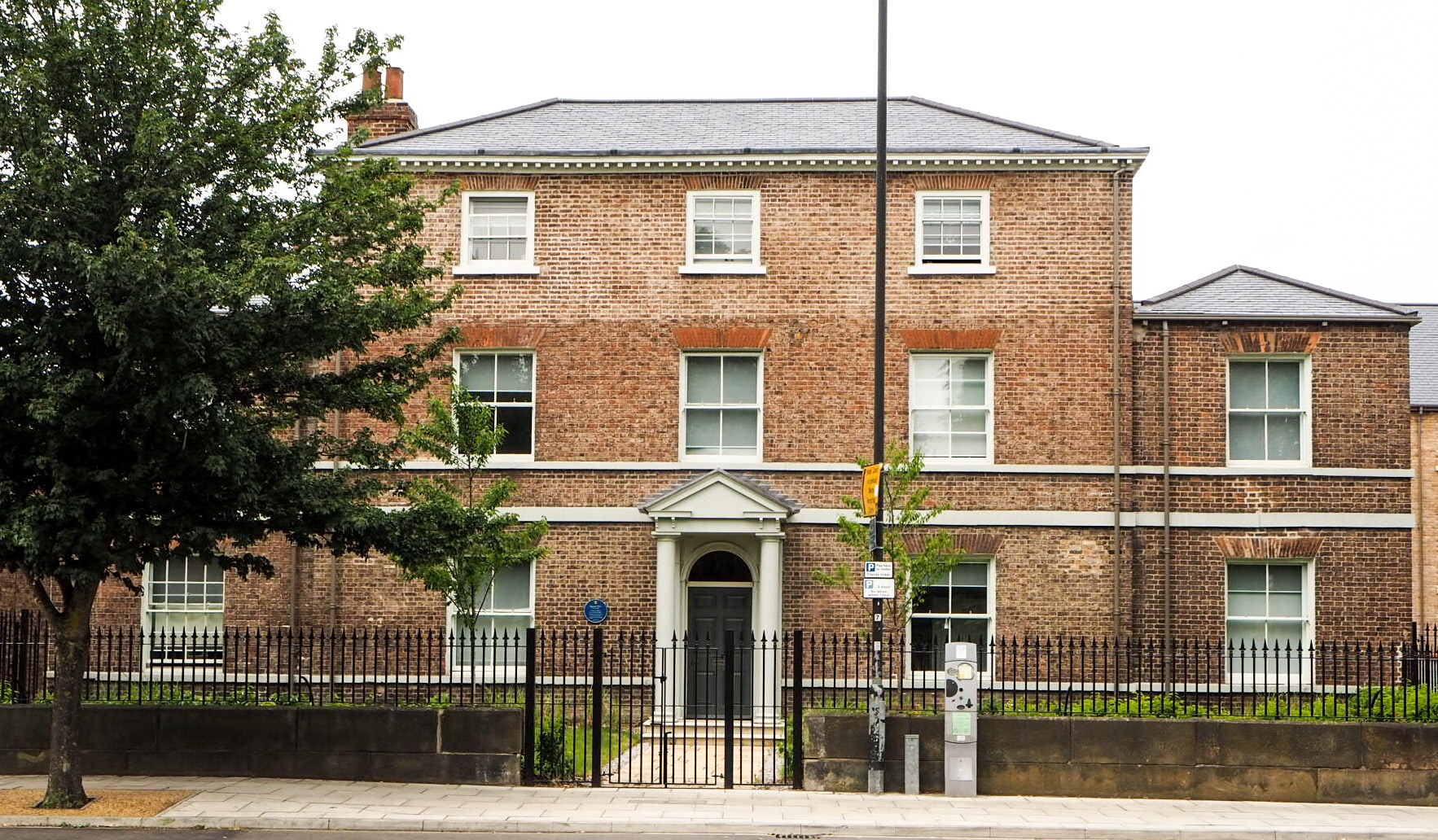Lawrence Street (York) on:
[Wikipedia]
[Google]
[Amazon]
Lawrence Street is a road in
 The street runs east from the junction of
The street runs east from the junction of
York
York is a cathedral city with Roman origins, sited at the confluence of the rivers Ouse and Foss in North Yorkshire, England. It is the historic county town of Yorkshire. The city has many historic buildings and other structures, such as a ...
, in England, immediately south-east of the city centre.
History
A Bronze Age cremation urn has been found in excavations by Lawrence Street, the only prehistoric remains found in central York. The street was originally constructed as aRoman road
Roman roads ( la, viae Romanae ; singular: ; meaning "Roman way") were physical infrastructure vital to the maintenance and development of the Roman state, and were built from about 300 BC through the expansion and consolidation of the Roman Re ...
, but there is no evidence of Roman occupation in the area, only pottery shards and possible signs of a clay quarry, the area otherwise being used as farmland.
There was some Anglo-Saxon building along the street, extending out from Walmgate
Walmgate is a street in the city centre of York, in England. During the Medieval period, the street was the site of a seafissh and cattle market. Walmgate Bar, was involved in the Siege of York in 1644, during the First English Civil War. Durin ...
. The Normans built an earthwork across the line of the street, and in the 12th century Walmgate Bar was constructed in it. In the 14th-century, the York city walls
York has, since Roman times, been defended by walls of one form or another. To this day, substantial portions of the walls remain, and York has more miles of intact wall than any other city in England. They are known variously as York City Wal ...
were extended over the earthwork, with Lawrence Street remaining entirely outside. St Edward the Martyr Church was built immediately outside Walmgate Bar, and St Lawrence's Church also existed by the 12th century. In 1142, St Nicholas's Hospital was built on the street, with its chapel used as a further parish church.
The street was heavily damaged during the Siege of York
The siege of York in 1644 was a prolonged contest for York during the First English Civil War, between the Scottish Covenanter army and the Parliamentarian armies of the Northern Association and Eastern Association, and the Royalist A ...
; Royalist defenders burned down the timber buildings to create a clear area outside the city walls, while Parliamentarians set up a battery in St Lawrence's churchyard. In 1798, John Dodsworth opened a school on the street, operating until 1888. In 1822, York Quarterly Meeting School was opened on the street, moving in 1846 to become Bootham School
Bootham School is an independent Quaker boarding school, on Bootham in the city of York in England. It accepts boys and girls ages 3–19, and had an enrolment of 605 pupils in 2016. It is one of seven Quaker schools in England.
The school ...
. In 1881, St Lawrence was demolished, other than its tower, and replaced by a new church.
During the 19th-century, the area surrounding the street was built up and became largely industrial, with a large timber yard and brickworks. Today, the road is the westernmost stretch of the A1079, from York to Hull. The City of York Council
City of York Council is the municipal governing body of the City of York, a unitary authority in Yorkshire, England. It is composed of 47 councillors, one, two, or three for each of the 21 electoral wards of York. It is responsible for all local ...
describes the road as "a traffic dominated street of eroded historic character and poor quality modern development".
Layout and architecture
 The street runs east from the junction of
The street runs east from the junction of Walmgate
Walmgate is a street in the city centre of York, in England. During the Medieval period, the street was the site of a seafissh and cattle market. Walmgate Bar, was involved in the Siege of York in 1644, during the First English Civil War. Durin ...
, Foss Islands Road and Barbican Road, to become Hull Road at its junction with Olympian Court. On the north side, it has junctions with Leake Street, James Street, Granville Terrace, Landsdowne Terrace, Nicholas Street, Milton Street, Bull Lane and Manor Court. On the south side, its junctions are with The Tannery, Regent Street, Farrar Street, Nicholas Gardens and St Nicholas Place.
Notable buildings on the south side of the road include the Rook and Gaskill, built as a pub about 1840; 14-18 Lawrence Street, an early 19th-century terrace; Ellen Wilson Cottages, former almshouses
An almshouse (also known as a bede-house, poorhouse, or hospital) was charitable housing provided to people in a particular community, especially during the medieval era. They were often targeted at the poor of a locality, at those from certain ...
; St Lawrence's Church; the former St Joseph's Convent, designed by George Goldie in 1870; the former Sisters of Mercy
The Sisters of Mercy is a religious institute of Catholic women founded in 1831 in Dublin, Ireland, by Catherine McAuley. As of 2019, the institute had about 6200 sisters worldwide, organized into a number of independent congregations. They a ...
Convent; a community of Corpus Christi Carmelites; and the early 19th-century 102-104 Lawrence Street. On the north side are the Rose and Crown, built as two cottages in the early 18th-century; 17, 21-23 and 25-27 Lawrence Street, all built in the late 18th-century; Tuke House, built for Samuel Tuke in the late 18th-century; 45-59 Lawrence Street, a terrace built in about 1835; the early 19th-century 61 Lawrence Street; and 81-91 and 93 Lawrence Street, built about 1830.
References